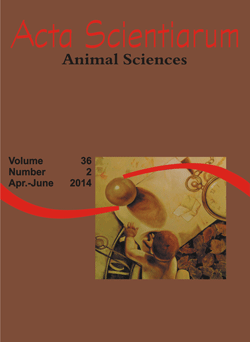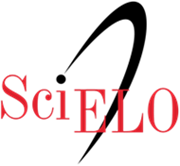<b>Body composition and deposition efficiency of protein and energy in grazing young bulls
Abstract
The effects of supplementation with different protein: carbohydrate ratios on body composition, carcass characteristics and protein and energy deposition efficiency of young were assessed. Twenty-four Nellorecalves (132.5 ± 5.5 kgand 90-150 days of age) were kept on pasture for a 430 day experimental period. The treatments were: Control = mineral mixture only; HPHC = high-protein and high-carbohydrate supplement; HPLC = high-protein and low-carbohydrate supplement; LPHC = low-protein and high-carbohydrate supplement; LPLC = low-protein and low-carbohydrate supplement. Four animals at begning and 20 animal at end of experiment were slaughtered to evaluate the carcass composition. Control bulls had the lowest (p < 0.05) intake of ME (9.8 Mcal day-1) with no difference (p > 0.05) between supplemented bulls (13 Mcal day-1). Although non-supplemented bulls had less (p < 0.05) retained protein, retained energy (RE), body weight gain and dressing percentage, differences were not observed (p > 0.05) between supplemented bulls. High-carbohydrate supplements were associated with more (p < 0.05) RE (596.2 Mcal) than low-carbohydrate supplements (515.5 Mcal). Differences were not found (p > 0.05) in the energy efficiency between the groups. Therefore, supplementation increases the intake and retention of protein and energy without changing the retention efficiency.
Downloads
DECLARATION OF ORIGINALITY AND COPYRIGHTS
- I Declare that current article is original and has not been submitted for publication, in part or in whole, to any other national or international journal.
The copyrights belong exclusively to the authors. Published content is licensed under Creative Commons Attribution 4.0 (CC BY 4.0) guidelines, which allows sharing (copy and distribution of the material in any medium or format) and adaptation (remix, transform, and build upon the material) for any purpose, even commercially, under the terms of attribution.
Read this link for further information on how to use CC BY 4.0 properly.








































